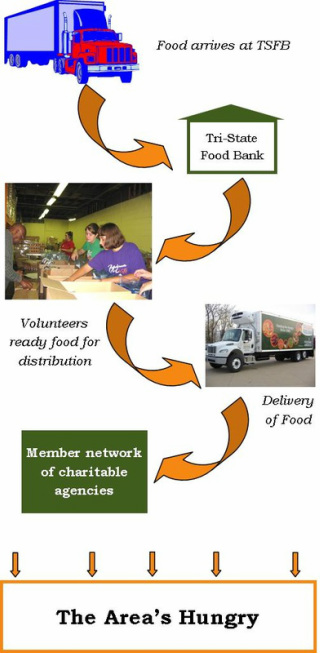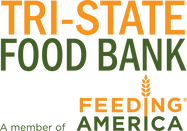What's a food bank?
Our primary service as a food bank is to collect usable donated foods and disburse to non-profit feeding organizations in a 33-county service area of the Tri-State. Before the advent of food banking in 1967, twenty percent of all the food produced in America went to waste. Millions of pounds of food are destroyed each year in this country, food valued at more than $31 billion. Most of this is edible food that can be used to feed hungry people. The food being rescued is edible food that often does not meet market standards.
Examples of the types of food being destroyed are:
- Fruits and vegetables which are too big or too small to be mechanically picked or have cosmetic imperfections.
- Mis-labeled, mis-processed or mis-packaged foods.
- Case lots that are damaged in transit or in the warehouse.
- Food that is thought to be unusable because of labeling with regards to "expiration dates".
- Overproduction.
- Food produced for special promotions.

Often, food donations are so large that individual charities cannot safely store or handle the product. Also, the donation may be beyond the individual charity's current need. Food banks can store dry, frozen, or refrigerated product safely and in large quantities and then equitably disburse it to a variety of charitable organizations.
The product is received from a variety of sources including food drives, local grocery retail stores, food manufacturers, local farmers, USDA commodities, and Feeding America. After careful inspection the food goes to non-profit agencies such as food pantries, soup kitchens, programs serving hot meals to senior citizens, neighborhood outreach programs, day care programs, supplemental and emergency relief programs, summer feeding sites, rehabilitation programs, after-school programs for children, and areas experiencing a disaster such as tornado or flood.

